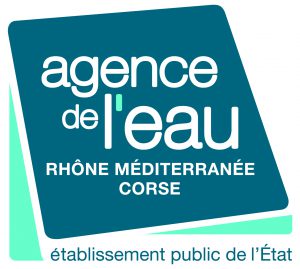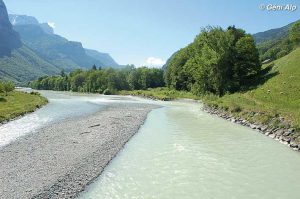Soil bioengineering techniques applied to riverbanks are likely to participate actively in the restoration of the functional character of riparian forests (return of biodiversity, restoration of corridor functions, resistance to invasive alien species, etc.) while responding to the social demand for protection against erosion risks.
For example, in urbanized alpine valleys, riparian forests are sometimes the last biological corridor allowing the circulation of species along the valley. This is also the case in highly urbanized zones or in some large cereal plains.
However, when the banks are strengthened with riprap, the absence of vegetation, and therefore of cover, creates a discontinuity along biological corridors. In addition, the high temperatures observed in summer on the riprap, and the absence of vegetation, make these environments unfavorable for the reception and circulation of animal and plant species.
Restoration work on these environments is often done without a good knowledge of their structures and function, particularly concerning their roles as corridors and their connection to the landscape. The restoration of riverbanks often permits the restoration of the continuity of the tree corridor but the effect of this restoration on the functionality of the corridors needs to be clarified.





To elaborate
Fremier, A. K., M. Kiparsky, S. Gmur, J. Aycrigg, R. K. Craig, L. K. Svancara, D. D. Goble, B. Cosens, F. W. Davis & J. M. Scott, 2015. A riparian conservation network for ecological resilience. Biological Conservation 191:29-37.
Trame verte et bleue : Centre de ressources http://www.trameverteetbleue.fr/
Ward, J. V., K. Tockner, U. Uehlinger et F. Malard (2001). Understanding natural patterns and processes in river corridors as the basis for effective river restoration. Regulated Rivers: Research & Management 17(4‐5): 311‐323.




